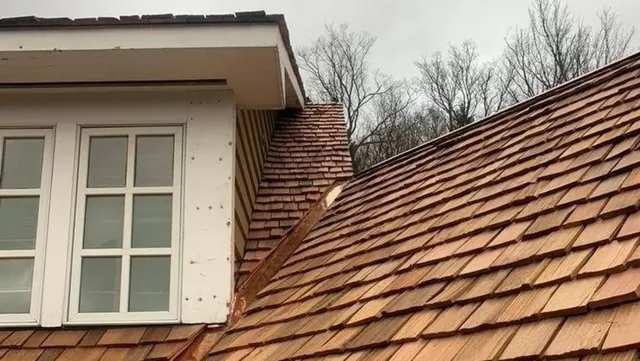Choosing the right roof for your home involves considering various factors, with climate being one of the most important. Weather conditions such as temperature, humidity, precipitation, and wind patterns can significantly impact the durability and effectiveness of roofing materials. A professional roofing contractor can provide valuable insights into the best roofing options based on the specific climate in your area. We will explore how roofing professionals can assist homeowners in selecting the most suitable roofing materials, ensuring longevity, efficiency, and comfort in any climate.
Understanding Your Climate’s Impact on Roofing Choices
The first step in selecting the right roof is understanding how your local climate can affect the performance of roofing materials. Climate conditions such as extreme temperatures, frequent rainfall, high winds, or heavy snow can all influence the choice of roofing materials. Roofing professionals are familiar with these conditions and can recommend options that will meet your area’s specific challenges. For instance, in regions with heavy snowfall, a steep-pitched roof may be more effective at shedding snow. At the same time, areas with intense sunlight may require materials that can resist heat buildup and UV degradation. By assessing your area’s unique climate conditions, a roofing professional can help you decide which materials will last the longest and provide the most reliable protection.
Roofing Materials That Work Well in Hot, Sunny Climates
In areas with high temperatures and intense sun exposure, roofing professionals often recommend materials designed to reflect heat and reduce energy costs. Asphalt shingles with reflective coatings, metal roofing, and clay or concrete tiles are popular in such regions. Metal roofing, for example, is highly reflective, which helps keep the house cooler by reflecting a significant amount of sunlight. This improves comfort inside the home and can lead to lower cooling costs during the summer months. Clay and concrete tiles, on the other hand, are known for their natural ability to resist heat absorption, providing better insulation from the outside temperature. A roofing professional can help you select the right material based on the degree of sunlight exposure and energy efficiency requirements for your home, ensuring that your roof performs optimally year-round.
Choosing Roofing Materials for Cold and Snowy Climates
For homes in colder climates with frequent heavy snowfalls and freezing temperatures, roofing professionals recommend materials that can handle the weight of snow and provide excellent insulation. Shingle options with a higher thermal resistance rating or metal roofing systems are often preferred in snowy regions due to their ability to shed snow and ice. Asphalt shingles with a higher-grade underlayment or rubberized material are often chosen for these climates because they are more flexible and resistant to cracking under the weight of ice. Metal roofs are also popular for their ability to prevent snow and ice accumulation on the roof, thanks to their smooth surface and slope. Roofing contractors will help you evaluate the roof’s slope, material strength, and insulation properties to ensure that it can withstand the harsh winter conditions without compromising structural integrity or comfort.
How Roofing Professionals Address Wind Resistance
Wind resistance is another important consideration when selecting roofing materials. In areas prone to storms, hurricanes, or high winds, roofing professionals at Malcarne Contracting emphasize the need for materials that can withstand these forces without causing damage to the roof structure. Materials such as metal roofing, slate, and certain high-quality asphalt shingles are known for their wind resistance. Roofing contractors can assess your home’s vulnerability to strong winds and recommend materials with the necessary durability and wind resistance. Additionally, professionals can ensure that the roof is properly installed, with reinforced fastening systems to prevent the roof from being lifted or damaged during high winds. They may also advise on roof designs that minimize wind resistance, such as roofs with low slopes or features that direct wind flow to reduce pressure on the roof. The expertise of a roofing contractor is essential in ensuring that your roof remains intact during extreme wind events.
Considering Moisture and Humidity in Your Roofing Decision
In regions with high humidity or heavy rainfall, roofing professionals often recommend materials resistant to mold, mildew, and moisture damage. Materials such as metal roofing, slate, and synthetic shingles offer natural resistance to water, which is critical in preventing rot and decay. These materials are less likely to absorb moisture, making them ideal for areas with frequent rain or high humidity. Additionally, roofing contractors can suggest using certain underlayment materials, such as synthetic felt or rubberized membranes, which add an extra layer of protection against moisture infiltration. Professionals can also ensure proper ventilation in the attic, which helps regulate humidity levels inside the home and prevents moisture buildup that could lead to roofing issues. By considering moisture and humidity, a roofing contractor can guide you to materials that will provide lasting protection against the elements.
Selecting the right roofing material for your home’s climate is a crucial decision affecting your roof’s longevity, comfort, and cost-effectiveness. Roofing professionals play a vital role in guiding homeowners through the decision-making process, ensuring that the chosen materials are suited to the specific weather conditions in their area. Whether dealing with extreme heat, cold, moisture, or wind, roofing contractors have the knowledge and experience to recommend the most suitable options. By working with a professional, homeowners can enjoy peace of mind knowing their roof offers reliable protection and contributes to a more energy-efficient home.































